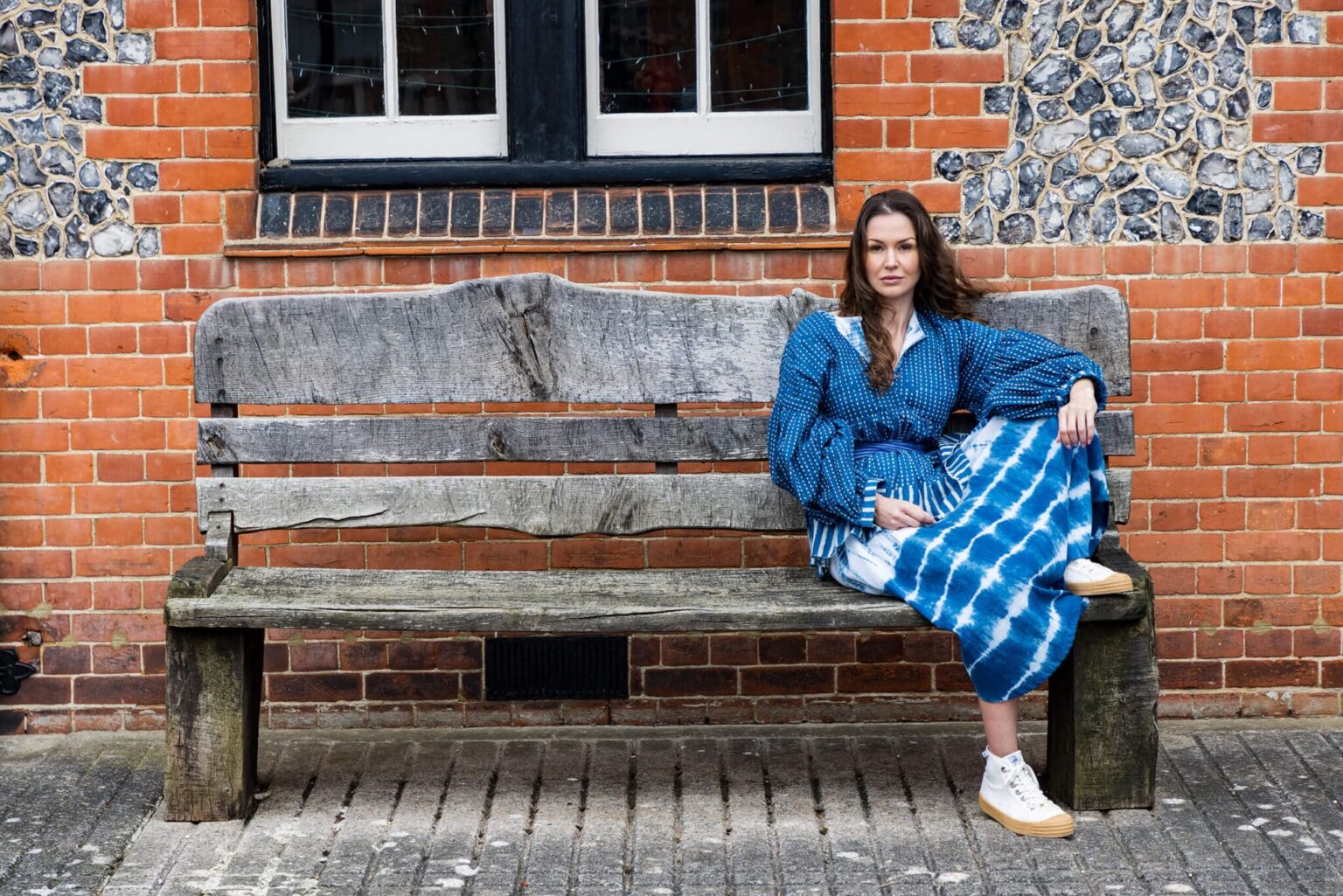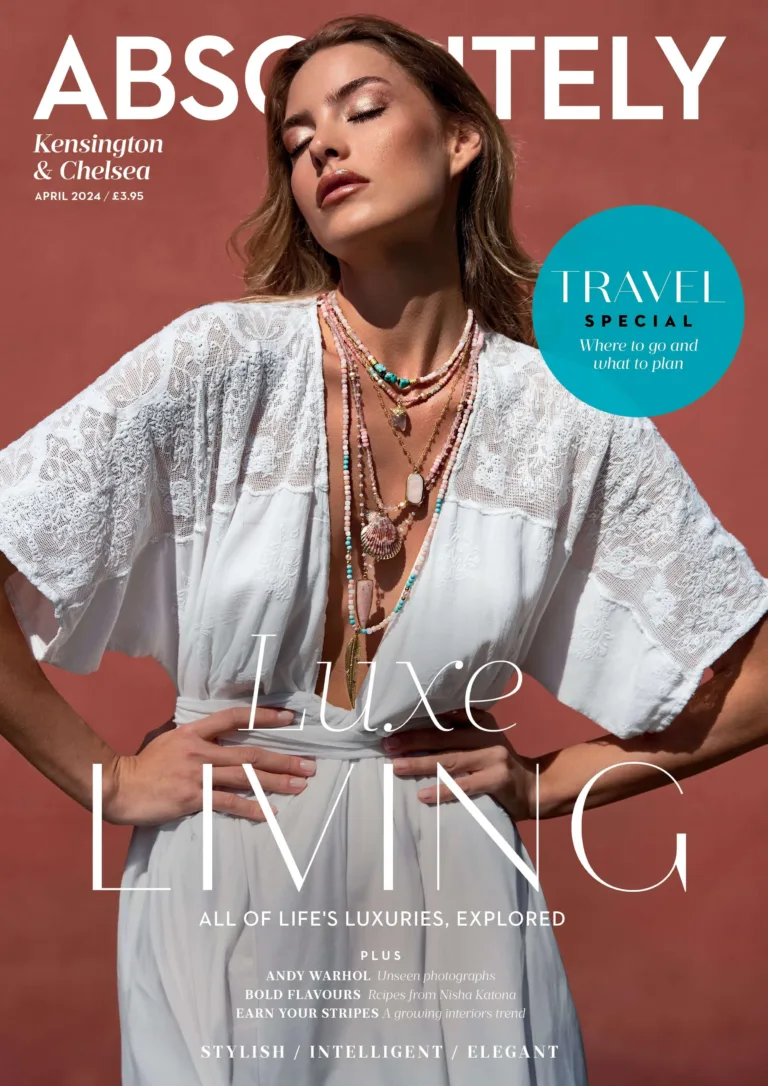We meet Lisa Reddings, the Wheathampstead local who is behind the sustainable brand Indigowares, to discover fashion with a difference
Pre-Indigowares, what was your background in the fashion industry?
I trained as a textile designer at Brighton Uni. After graduating, I spent nearly 20 years as a conceptual textile print designer based mostly in the fast fashion industry, working in New York, Italy, Spain and London. When I was in New York, I worked for a textile studio that created artwork for companies like Calvin Klein, Macy’s, The Gap, and Liz Claiborne. Then I returned to the UK after 9/11 and worked as a freelance print designer until I had my two kids.
How did you first come across indigo dyeing?
After I became a mum, I took time away from the industry to care for my kids. During that time, I had taken up indigo dyeing as a hobby. I fell completely in love as I learned about its magical dyeing processes, as well as the cultures that did and still do use it. Having worked in the fast fashion industry for so long, I grew a bit disillusioned with it all. Indigo dyeing brought the focus back to making pattern, which was always my passion, and the traditional processes and history behind it.
Why were you keen to convert your interest into a business?
As I became more and more entranced with indigo dyeing and the process, I spent a lot of time thinking about the techniques and traditions that have been forgotten due to our ever-quickening demand for fast fashion throw away trends. This is one of the huge things that led me to start Indigowares in 2016 – a need to return garment making to an ethical, sustainable practice that celebrates cultural tradition.
I also went through a divorce around the time, which meant that I had to find a way to make a living and be there for my children all at once. Having these circumstances intersect with my new passion for indigo is what really pushed the interest forward into a business.

Can you explain how the dyeing process works?
One of the things that I speak about a lot is how the indigo dyeing process is something that comes straight from the earth. We work very closely with our indigo farmer (and amazing artisan) Kiran Sandhu, who grows the indigo that we use on her farm in Uttarakhand, India. If you take a look on our website, we’ve written quite a few blogs about the process of how indigo is grown as a green plant and extracted to create this magical blue pigment.
The dyeing process itself starts with creating an indigo vat, which involves mixing an alkaline solution to make the indigo soluble, letting the indigo ferment, then adding the indigo stock to the vat.
After all of the mixing, measuring, and waiting, the next steps are all about dipping your fabric. This can be as simple or complex as you like really, depending on the technique you want to use. For example, Shibori patternmaking is traditionally done with indigo – this is a resist dye process where the fabric is folded, stitched or clamped to leave parts of it undyed. The results might be familiar to you as a lot of similar techniques show up in tie dye.
If you’re really curious to try it for yourself, we sell DIY kits that come with all the supplies and walk you through the process step by step – I personally designed the handbook it comes with to include every single detail, so that dyeing can be as engaging and fun for you as it is for me!
How do you create a new design?
My new designs are gathered from inspiration found in vintage textiles, experiments and studio trials. We create sample garments and patterns both here in my studio and with our collaborators in India. For example, I’ll indigo dye on different fabric contents to see how they take, test different patterns and natural dye techniques – everything needed to land on the perfect combination of idea and implementation.
After the design is set, production is split between my home studio here in Hertfordshire and in India, so the process of creating pieces can look different depending on where the resources are coming from, where the weather is suitable for dyeing, where the vintage materials can be found, and so many factors. Each design has a unique journey to production.
What type of clothing do you sell?
Indigowares creates women’s clothing for environmentally conscious folk. Our garments are rich in tradition, and our aim is to tell the story behind who made each garment, and how. We hope that by showing these details, the wearer will treasure their garment and take care of it like a precious item that is as alive and valuable as the natural resources it came from.
What are the most popular items?
Our vintage kantha jackets are always very popular due to their one-of-a-kind nature; I personally select the vintage quilts that are used to create these jackets, and still get surprised by all the unique colours and patterns that I get to discover.
We launched our first dress collection this year which has also been very popular. The patterns on these dresses are created through both indigo dyeing and block printing, which was really special as we got to share videos taken while creating the actual fabrics our customers then got to wear.

Why is sustainability important to you?
Well, we only have one planet and I think it’s our duty to care about how we use its natural resources. Somewhere along the line this has been forgotten when it comes to our clothing – I think a lot of people shop impulsively for trends, for what they like or want in the moment without thinking of how this adds up. It is estimated that 92 million tons of textile waste is created by the fashion industry every year. With the rapid rate this has increased, the estimate is that this will increase 60% by 2030 – and we can help stop this! This is why I think it’s so important to share with our customers how they can be more sustainable and eco-friendlier to our beautiful planet.
How long have you lived in Wheathampstead and what do you love about it?
My family and I have lived here since 2013 just after my second child was born. It’s a great village and has a super location.
How has the message of what you are trying to do been received in the local community?
I am lucky enough to be one of the artists that shows at Childwickbury Arts each year. This art fair is only four miles from my house, so I get a great chance to meet local people at the summer fair and then at the Christmas fair at the end of November. The artists who show here really do create a sense of community. Earlier this year, Indigowares put together a pop-up shop in Harpenden, called The Craft Assembly, with four other artists who have all shown at Childwickbury. It just goes to show how this support really grows.
Where would you like to go from here?
This year we are travelling to India to source more vintage textiles and also help in the Indigo harvest in the foothills of the Himalayas with our friend and Indigo farmer Kiran. In terms of design, we have some beautiful indigo patchworks planned and also some heritage printed pyjamas for autumn – we’ve already sampled them and they look great.
We also like to take on bigger collaborations, like our ongoing partnership with Levi’s, to try to help larger brands bring sustainability into their model. In the next month we are working with Muji to naturally over dye 100 garments donated back by customers for their ‘Re Muji’ project. This will be launched early September in their London Islington store. All in all, lots coming up!







